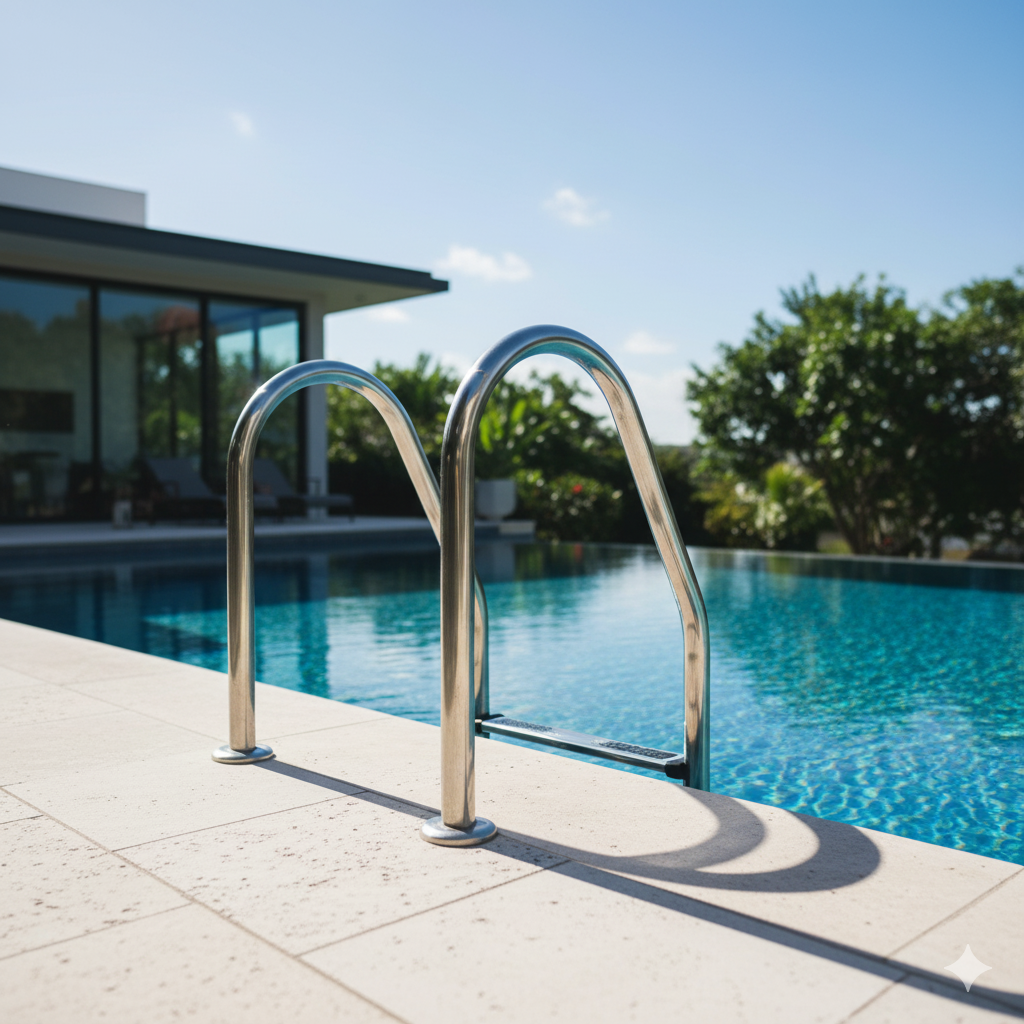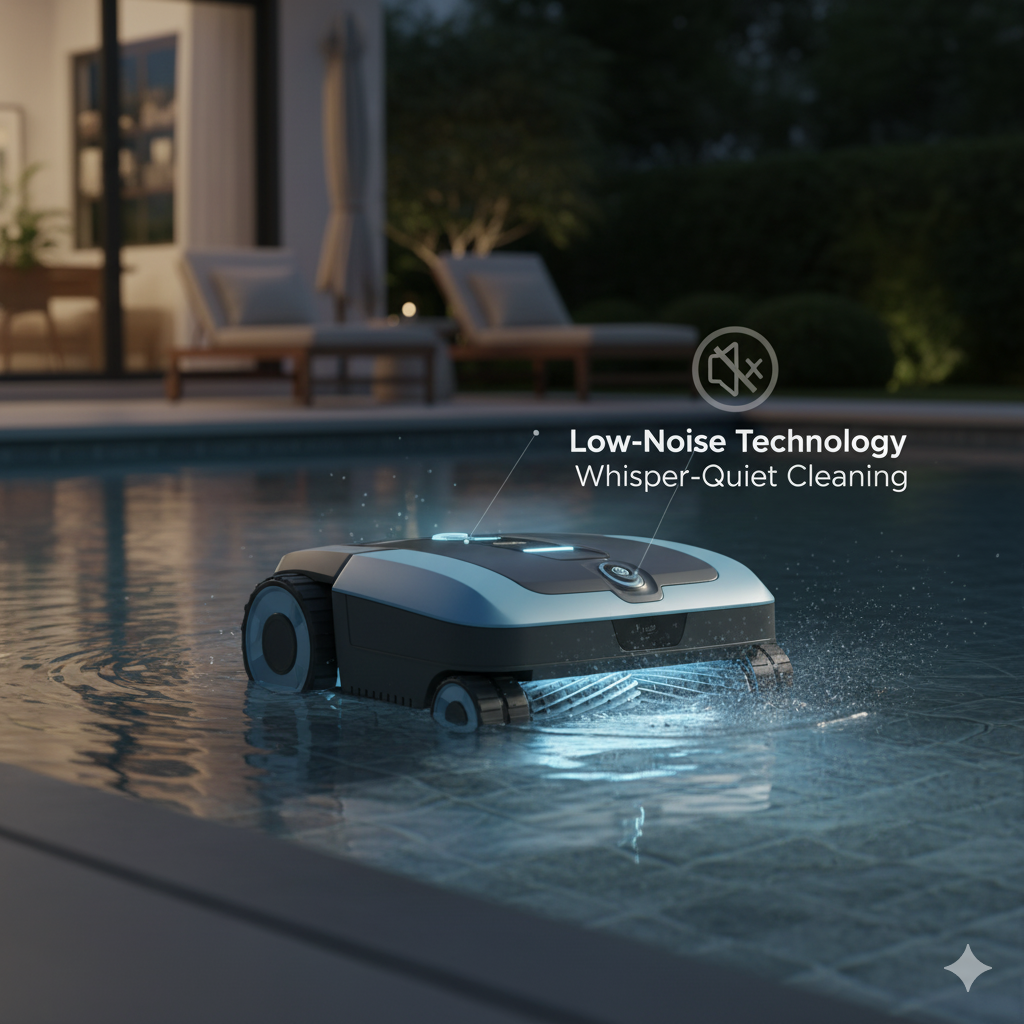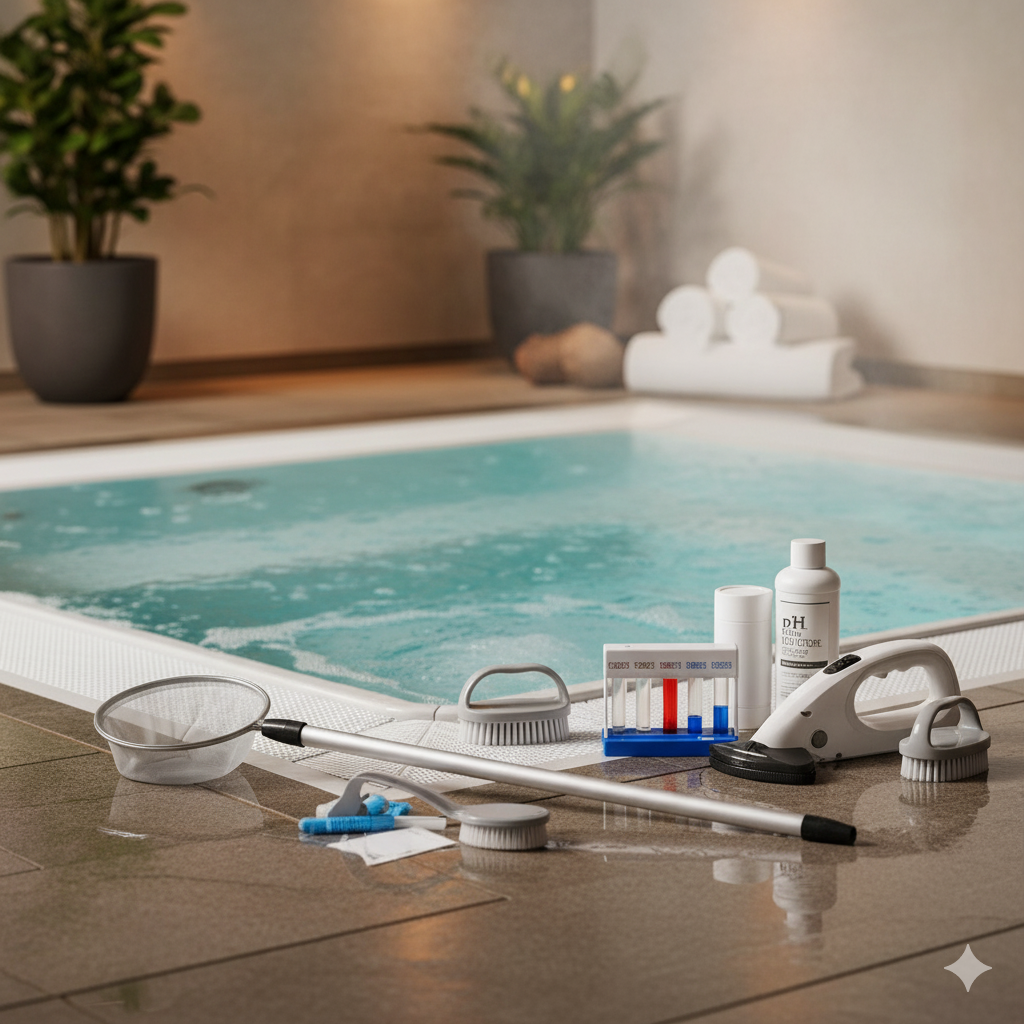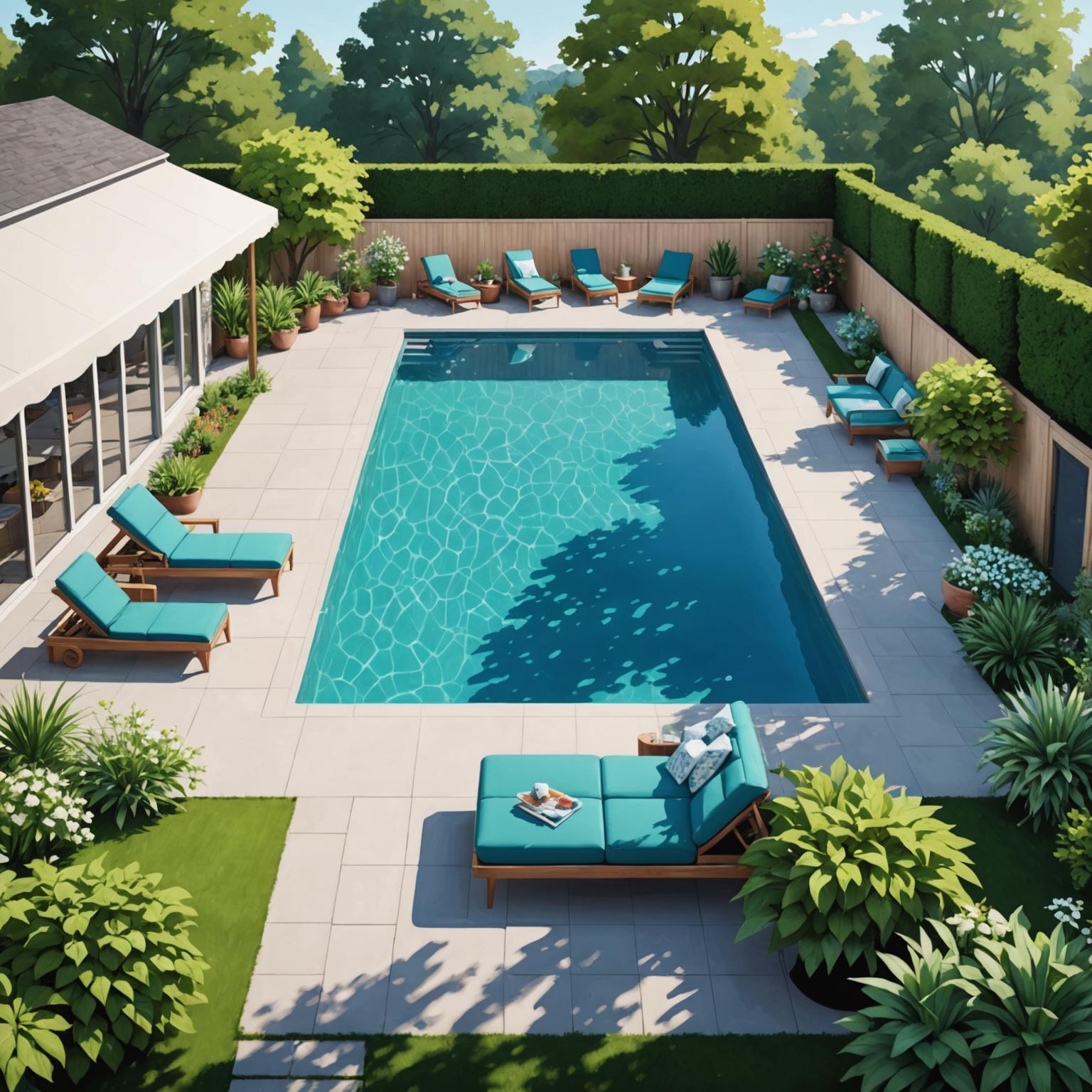
Minimalist Design, Maximum Grip: How Modern Ladders Complement Pool Architecture
In public pools, resorts, and fitness centers, the pool ladder may appear simple — yet it directly determines user safety, comfort, and facility durability. A poorly designed ladder is more than a nuisance; it can cause corrosion, instability, or even safety hazards.
Modern pool ladder manufacturers like Bonny are reengineering this essential equipment to meet the evolving needs of large-scale aquatic environments — ensuring both compliance and comfort are seamlessly integrated into every detail.
Material Innovation: Moving Beyond Traditional Steel
For decades, stainless steel was the default material for pool ladders. While durable, it is not immune to chemical corrosion or temperature-induced stress.
Today’s leading manufacturers employ marine-grade stainless steel (SS316) and fiber-reinforced polymer (FRP) hybrids, balancing strength and resistance. These materials are chosen for three critical reasons:
| Material Type | Key Properties | Suitable Environment |
|---|---|---|
| SS304 | Economical, basic corrosion resistance | Indoor & mild climate pools |
| SS316 | High chloride resistance, long lifespan | Saltwater & resort pools |
| FRP / Composite | Lightweight, non-conductive, fully corrosion-proof | High-humidity or coastal facilities |
This evolution enables ladders to maintain structural integrity even in aggressive chlorine or saline environments — an essential factor for commercial and resort facilities that operate year-round.
Precision Engineering: How Stability is Achieved
The difference between a standard and a professional-grade pool ladder lies in mechanical precision.
Advanced manufacturers now use finite element analysis (FEA) during design to simulate stress points and optimize weight distribution. This ensures the ladder frame resists deformation, even with repetitive high-volume use.
Key structural advancements include:
-
Dual-tube reinforcement systems that prevent wobbling.
-
Anchored footplates with polymer cushioning to absorb impact.
-
Anti-slip rungs designed through laser etching, improving traction even when wet.
Each innovation serves one purpose — to make every entry and exit predictable, safe, and maintenance-free for years.
Design Harmony: Functionality That Matches Aesthetics
Pool ladders are no longer afterthoughts; they are visual components of the architectural identity of the pool.
Bonny’s design philosophy integrates curved geometries, mirror-polished finishes, and ergonomic grip profiles to match the visual flow of luxury aquatic centers. Whether it’s a minimalist stainless-steel layout or a custom powder-coated tone for boutique resorts, aesthetic adaptability is now part of the engineering process.
The intersection of design and safety represents a new era of pool equipment manufacturing — where form no longer follows function, but complements it.
Cost and Maintenance Advantages for Facility Managers
From a procurement perspective, choosing the right ladder directly influences operational cost.
A single replacement cycle or corrosion repair in a hotel pool can exceed the original cost of the ladder. Therefore, investing in precision-built, corrosion-proof equipment ensures:
-
Longer life cycles (up to 40% more than conventional ladders)
-
Reduced maintenance frequency through sealed joint construction
-
Simplified replacement due to modular part design
For high-traffic environments such as resort complexes, public gyms, and aquatic schools, this translates into measurable cost efficiency and operational consistency.
Application Scenarios: Where Design Makes the Difference
Modern pool ladders are now tailored for distinct environments, each demanding specific attributes:
| Environment | Ladder Type | Functional Emphasis |
|---|---|---|
| Public Pools | 4-step SS316 ladder with anti-slip treads | Safety and throughput |
| Resorts | Curved composite design | Aesthetics and corrosion resistance |
| Fitness Centers | Reinforced tubular ladder | Durability under constant use |
| Educational Pools | Adjustable depth systems | Flexibility and maintenance ease |
By matching structural features to operational conditions, facilities achieve higher safety standards and longer asset performance.
Guidelines for Product Selection
When selecting pool ladders for professional applications, consider these key parameters:
-
Environmental exposure – Chlorine, saltwater, and humidity levels determine material grade.
-
Usage frequency – Choose industrial-grade thickness (≥1.5mm) for heavy use.
-
Mounting configuration – Embedded anchor vs. deck-mounted depends on pool design.
-
Safety compliance – Ensure compliance with EN 13451 and ANSI/APSP standards.
-
Maintenance accessibility – Modular models reduce service downtime.
Facility operators often overlook the micro-details of ladder configuration, yet those choices dictate the total life-cycle cost and guest experience quality.
Frequently Asked Questions
Q1: How do I prevent rust in stainless-steel ladders?
Use SS316-grade materials and ensure proper grounding to prevent galvanic corrosion.
Q2: Are composite ladders as strong as metal ones?
Yes. Advanced FRP structures offer equivalent load-bearing capacity with added corrosion resistance.
Q3: Can pool ladders be customized for irregular pool edges?
Absolutely. Manufacturers provide adjustable mounting bases and curved profiles for custom installations.
Q4: What’s the ideal maintenance frequency?
A quarterly inspection cycle is recommended for commercial facilities; weekly for saltwater environments.
Conclusion: Building Confidence in Every Step
A modern pool ladder manufacturer is not simply producing hardware — it’s shaping the interface between safety and design.
By combining hydrodynamic principles, industrial-grade materials, and architectural aesthetics, Bonny delivers ladders that meet global facility standards and operational realities.
To explore tailored ladder systems and pool access solutions that elevate both safety and style, visit Bonny’s official website or contact us here for expert consultation.






